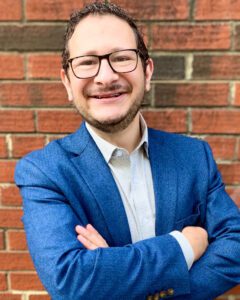In 2020, Equal Measure launched Learning Circles—a new professional development series for staff focused on three areas: Equitable Evaluation, Facilitation, and Data Visualization. The goal is to build staff expertise and skills in key areas aligned with our strategic plan and mission—ultimately to design and implement projects for our clients that increase learning and facilitate social change. In this post, Equal Measure Director Dan Tsin provides an overview of what we’ve learned in our Facilitation Learning Circle.
As evaluators, we are often asked to share what we learn. And in most cases, we present those findings in a packaged presentation or brief—where we have comfort in controlling the narrative. But at the same time, we engage in shared reflection and interpretation with clients, grantees, and other stakeholders. In those instances, instead of focusing on our thoughts, we must create space where others can share their thoughts.
The playbook to facilitate group reflection and engagement is much different than the one used to deliver tailored presentations. Facilitators need to elevate participants’ ideas first, sometimes at the expense of their own. Facilitated experiences are never the same, and the dynamics of the space are challenging to predict: How engaged are participants? How similar or varied are their comments? How comfortable are participants in speaking against the grain? But this same uncertainty opens the door for participants—and facilitators—to raise new ideas, question assumptions, and discover new truths about themselves and their work. Facilitators who embrace this uncertainty, encourage creative risk-taking, and model vulnerability create the space that encourages those breakthroughs.
Through our Facilitation Learning Circle, members of the Equal Measure team have spent the past 18 months sharpening group reflection skills and exploring different facilitation practices and approaches. Our sessions have emphasized the importance of creating safe spaces for participants to share openly, honestly, and without fear of rejection, judgment, or consequence.
As an illustration of that emphasis, in 2021, the Learning Circle partnered with Comedy Sports Zone in Philadelphia to boost capacity and stamina to facilitate unpredictable, messy, yet meaningful conversations. We engaged in (virtual!) improv games, honing strategies that we can draw upon when facilitating groups. I’d like to share three ways evaluators can use improvisation skills to aid in facilitation:
1. Be present.
The most important reminder for improvisers and facilitators alike is to keep listening. To create inclusive spaces where participants feel valued, facilitators need to honor each idea and contribution participants offer. In practice, facilitators should engage in active listening, where we give participants our full focus, rather than worrying about our talking points and notes, or worrying about what we will say next. Instead, we should explore new ideas alongside our participants. Done right, each facilitated session will be unique—taking shape and form based on the contributions and collaboration of those present.
IMPROV HACK: While facilitating, shift your focus from “What should I say next?” to “What did they just say?”
2. Be accepting.
A foundational lesson for all improvisers is the adage, “Yes, and…“. Responding “yes, and” to a new idea or perspective lets the participant know they are not only heard, but their ideas are worthy of engagement. This approach creates safety for group contribution and encourages others to participate. Improvisers are taught to pretend that there are no bad ideas. Facilitators can mirror this in their sessions by avoiding the urge to dismiss or ignore ideas and being flexible with their agenda.
IMPROV HACK: Practice “Yes, and…”, but avoid “Yes, but…”. “Yes, but” sends a mixed message to participants that their ideas may only be conditionally accepted.
3. Be confident.
Facilitators should let go of the notion that they need to have all the answers. The fear of “getting it wrong” in groups keeps us from testing thoughts, offering new perspectives, and challenging assumptions—ultimately limiting the potential of emergent ideas. Through improv, we learn that overthinking and overpreparing can stymie the flow of ideas. Instead, participants should be encouraged to trust their instincts. As facilitators, we can strive to create judgment-free spaces that encourage creative risk taking.
IMPROV HACK: By modeling vulnerability, freely admitting when we don’t know something, and moving forward from (while acknowledging) mistakes, we make room for others to do the same.
It is a strange recognition to realize I have been conflating “presentation” and “facilitation” for much of my evaluation career. I would prepare for both in similar ways: thinking about my goals, writing my talking points, and practicing my remarks. But Equal Measure’s Facilitation Learning Circle, and our improv training, helped flip my disposition in facilitation. Instead of focusing on my ideas, my talking points, and my comfort, we learned to prioritize the space needed for participants to engage, share, and create. The improv hacks named above are one way to achieve that.
As you plan for your next presentation or facilitation, consider how you prepare for both. In what ways is it similar? What should you change?

Equal Measure Director Dan Tsin